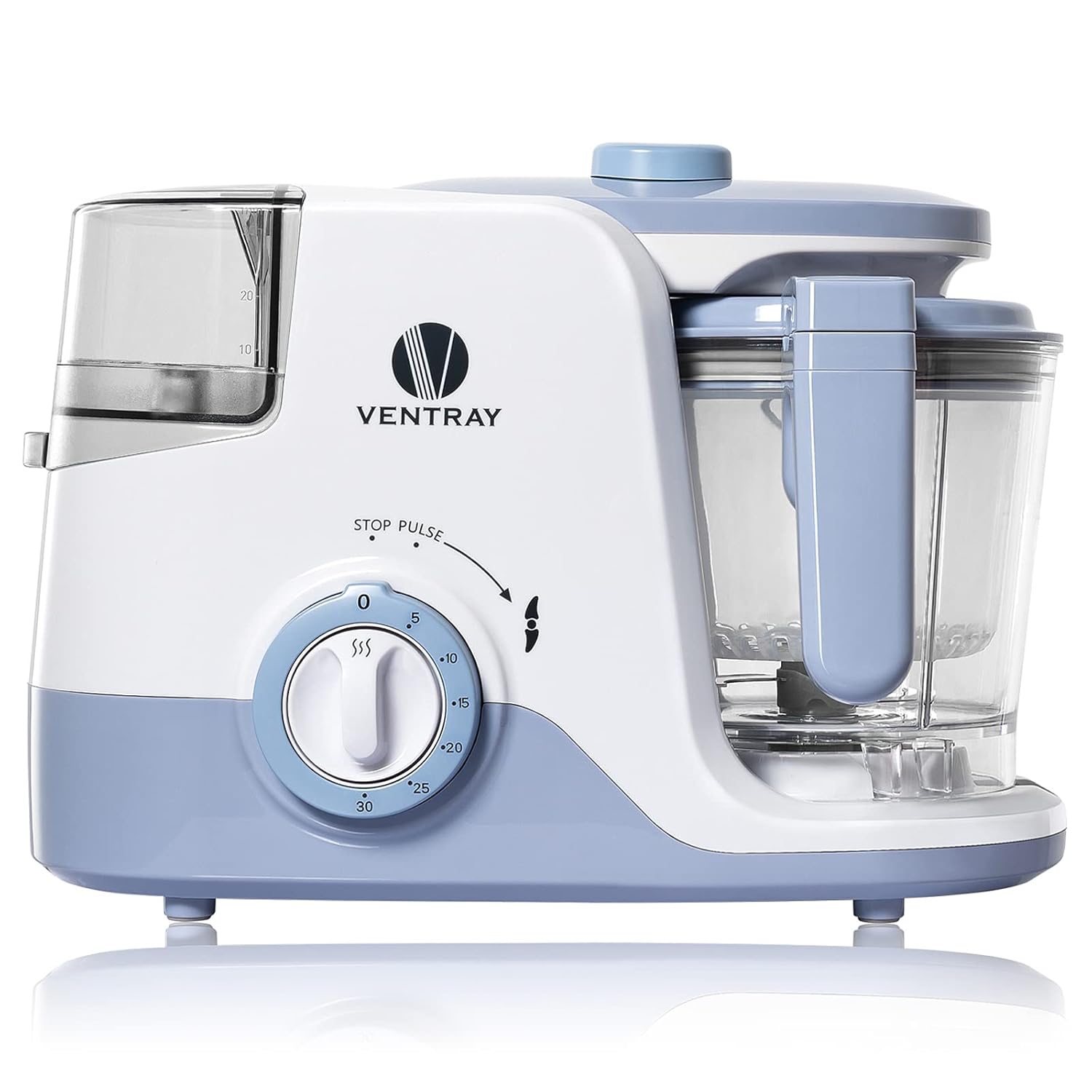Are you in the market for a new blender but feeling overwhelmed by the many options available? Choosing the right food blender for your needs can make a big difference in your cooking and baking adventures. In this blog post, we will explore the basics of blenders, from understanding the different types available to key features to look for in a high-quality blender. Whether you’re a smoothie enthusiast or a culinary whiz, finding the perfect blender is essential. Let’s dive in and find the blender that suits your needs!
Understanding Different Types of Blenders Available
Navigating the vast selection of blenders can be daunting, yet understanding their distinctions simplifies the decision-making process:
- Countertop blenders stand out for their versatility and power, ideal for those who often find themselves crafting large volumes of soups, smoothies, or other blended concoctions. Their robust motors and larger capacity make them a staple in many kitchens.
- Immersion blenders, or stick or hand blenders, offer a unique advantage by allowing you to blend directly within any pot or bowl. This type is perfect for pureeing soups or making small-batch sauces with minimal cleanup.
- Personal blenders have gained popularity for their compact size and convenience, catering to individuals looking to quickly whip up a single-serving smoothie or shake.
These come with travel-friendly cups, often aligning with a bustling, on-the-go lifestyle.
Each type caters to different culinary needs, lifestyles, and kitchen sizes. For instance, a large family might benefit more from the capacity and power of a countertop blender, whereas a solo fitness enthusiast might prefer the convenience of a personal blender. Similarly, home cooks who enjoy crafting soups and sauces might find an immersion blender an indispensable tool. Evaluating your typical kitchen activities and space will guide you towards the blender type that integrates seamlessly into your routine, ensuring your blending experience is enjoyable and efficient.
Key Features to Look for in a High-Quality Blender
Power and Speed Adjustments
A blender’s motor power, measured in watts, is a key indicator of its ability to handle tough ingredients like frozen fruits, nuts, and ice. High-quality blenders often boast powerful motors that can easily crush ice and blend dense mixtures smoothly. Look for models with multiple speed settings, as this allows for greater control over the texture of your blends, from silky smoothies to chunky salsas.
Durable, Easy-to-Clean Materials
A blender’s longevity is largely determined by the quality of its materials. Jars made from high-strength glass or BPA-free plastic offer durability and safety. Glass is naturally resistant to staining and odor absorption. In contrast, BPA-free plastic is lightweight and shatterproof. Additionally, dishwasher safe or easily disassembled components can save time and effort in cleaning.
Blade Design
The design and material of the blades significantly affect blending efficiency. Stainless steel blades are preferred for their sharpness and resistance to rust. Blades should be well-designed to create a vortex that pulls ingredients towards the bottom, ensuring even blending without having to stop and stir.
Versatile Functionality
A high-quality blender should offer versatility to tackle various tasks. Features such as pre-programmed settings for smoothies, soups, or ice crushing, and compatibility with attachments like food processors or dough blades, can enhance the functionality of your blender beyond simple liquid blends. This versatility makes it a more valuable tool in your kitchen arsenal.
Budgeting for Your Blender Purchase
When setting out to buy a blender, it’s essential to first assess your financial limits and understand that the price range for these kitchen appliances can be quite broad. Blenders can vary significantly in cost, influenced by brand, power, and added features. A basic, no-frills model might come at an attractive low price, suitable for those who will use it sparingly or for simple tasks like making the occasional smoothie or soup.
On the other end of the spectrum, high-performance models designed for culinary professionals or enthusiasts can command a premium, equipped with powerful motors, advanced features, and durability that justifies their higher cost.
To navigate this purchase wisely, consider the frequency of use and the tasks you expect your blender to perform. Investing in a more robust, feature-rich model might make sense if your daily routine includes a power-packed smoothie or you enjoy experimenting with recipes that require a blender. However, a mid-range or budget model could suffice for those who view a blender as an occasional aid.
Remember, a higher price doesn’t always guarantee better quality, but it can offer more versatility and longevity. It’s worth researching and reading reviews to find a blender that fits your budget and offers the best combination of features and reliability for the price. Special deals, discounts, and refurbished models can also allow acquiring a higher-quality blender at a more accessible price point. Investing wisely in the right blender can save you money in the long run by avoiding the need for frequent replacements or upgrades.
Tips for Maintaining and Cleaning Your Electric Blender
Regular Cleaning After Each Use
To keep your electric blender in top condition, it’s essential to clean it thoroughly after each use. This prevents residue from hardening and becoming difficult to remove. Rinse the jar immediately with warm water, then add a drop of dish soap and fill it halfway with warm water. Run the blender for 30 seconds, pour out the soapy water, and rinse with clean water. This simple habit can significantly prolong the life of your blender and keep it ready for your next culinary adventure.
Deep Cleaning Monthly
Over time, blenders can accumulate stubborn residues and odors, especially if used frequently for strong-smelling ingredients like garlic or spices. Once a month, give your blender a deep clean by blending a mixture of baking soda and water. This will help remove any odors and loosen tough stains. After the baking soda treatment, rinse well and dry thoroughly. Soaking the jar in vinegar and water solution for stubborn stains for a few hours before washing can work wonders.
Inspect and Clean Blades Regularly
The blades are the heart of your blender and require regular attention to maintain their sharpness and efficiency. Carefully remove the blades according to the manufacturer’s instructions, and use a brush to remove any particles that may be stuck. Check for any signs of wear or damage, and replace the blades if necessary to ensure your blender continues to operate at its best.
Store Properly When Not in Use
After cleaning and drying your blender, ensure all parts are reassembled correctly before storing. Store the blender with the lid on to avoid dust accumulation in the jar or place it in a cupboard. Keeping the cord neatly wrapped or tucked away prevents accidents and keeps your kitchen looking tidy. Proper storage keeps your blender clean and ensures it’s always ready for your next blending task.
Creative Recipes to Try with Your New High Speed Blender
Unlock the full potential of your new high speed blender with these creative and mouth-watering recipes that are sure to impress. First up is a vibrant, nutrient-packed Green Goddess Smoothie, blending spinach, avocado, banana, and almond milk for a creamy and refreshing drink. For those with a sweet tooth, try a decadent Chocolate Hazelnut Spread that rivals the store-bought versions. Simply blend roasted hazelnuts, cocoa powder, vanilla extract, powdered sugar, and some oil until smooth.
Dive into savoury territory with a Spicy Tomato and Roasted Red Pepper Soup. Blend charred tomatoes and red peppers with garlic, onion, and cream for a comforting bowl that packs a punch. Or, create a twist on traditional dips with a Creamy Beet Hummus, blending cooked beets, chickpeas, tahini, lemon juice, and spices into a beautifully hued and flavorful spread.
Whip up a batch of Mango Coconut Sorbet for a refreshing dessert or snack. Blend frozen mango, coconut milk, and a touch of honey or agave until it reaches a smooth, icy consistency. Serve immediately for a tropical treat that will cool you down on any hot day.
Each of these recipes showcases the versatility and power of a high-speed blender, making it easy to explore new flavours and textures in your culinary creations. Experiment with these ideas, and don’t be afraid to tweak ingredients according to your preferences or what’s available in your pantry. Your high-speed blender opens up a world of possibilities, from quick and nutritious breakfast options to elegant desserts and everything in between.
Troubleshooting Common Blender Problems
Even with careful use and maintenance, blenders can run into issues. Here are troubleshooting tips for some of the most common problems you might face:
Blender Won’t Start
Ensure it’s plugged into a working outlet if your blender refuses to start. Next, check the blender’s base and ensure the jar is properly aligned and locked. Some models have safety features that prevent the blender from operating if everything isn’t correctly assembled.
Blades Aren’t Spinning
A blender’s blades might stop spinning if there’s an obstruction or the motor’s coupling is worn out. Carefully remove any food particles that could be blocking the blades. If the problem persists, inspect the base where the jar connects to the motor. Wear and tear on the coupling may require replacement parts.
Leakage from the Blender Jar
Leaks can occur if the seal or gasket between the blender jar and the base is damaged or not seated properly. Inspect the seal for any signs of damage and ensure it’s correctly positioned. If the leak continues, it may be time to replace the seal or gasket.
Overheating or Burning Smell
Blenders can overheat if run for too long, especially when blending thick or heavy mixtures. If you notice a burning smell, immediately turn off the blender and unplug it. Allow it to cool down before checking for any visible damage. To prevent overheating, avoid running the blender for extended periods and ensure the blended mixture isn’t too dense for the blender’s capacity.
Addressing these common issues promptly can help maintain your blender’s performance and extend its lifespan, ensuring it remains a reliable tool in your culinary endeavours.
Conclusion
Selecting an ideal food blender is a critical step towards elevating your culinary creations. You’re well-equipped to navigate the vast market with a clear understanding of the various types of blenders, their distinct advantages, and the essential features that mark a model’s quality and suitability for your lifestyle. The insights on the importance of blender maintenance and care, alongside practical advice on troubleshooting common issues, further prepare you for a smooth and enjoyable blending experience. Remember, the best blender for you is one that not only fits your budget but also meets your daily needs, whether you’re crafting gourmet meals, simple smoothies, or experimenting with new recipes.
FAQs
Can I crush ice in a standard blender?
Many modern blenders can crush ice; however, ensure that the manufacturer specifies this capability to avoid damaging the blades or motor. High-powered blenders are usually better suited for this task.
How do I know if a food blender can handle hot liquids?
Not all blenders are designed to process hot liquids. It’s essential to check the product specifications or consult the user manual. A vented lid is crucial for blending hot liquids to prevent pressure build-up.
What’s the difference between a blender and a food processor?
While there’s some overlap in functionality, blenders are typically better for liquids and smooth mixtures, and food processors are more suited for tasks requiring more precise chopping, slicing, or dough mixing.




